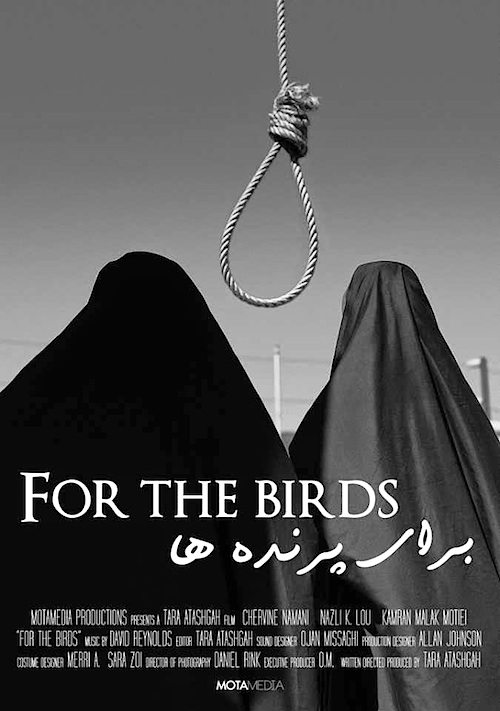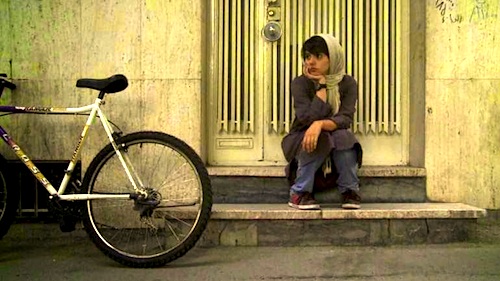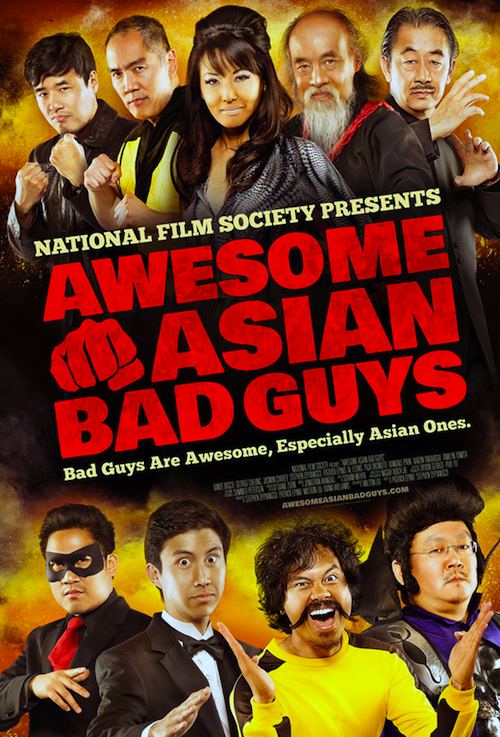 By Joe Bendel. If the cast and crew of an Iranian film chose to work under conditions of anonymity, it usually is a good sign you are about to watch something bold and challenging. While that is not the case for these filmmakers, based in either Iran or America, most of their assembled films reveal much about the state of Iranian society. Alienation and uncertainty are themes cropping up throughout the Iranian Shorts Program, which screened during the 2014 Asian American International Film Festival.
By Joe Bendel. If the cast and crew of an Iranian film chose to work under conditions of anonymity, it usually is a good sign you are about to watch something bold and challenging. While that is not the case for these filmmakers, based in either Iran or America, most of their assembled films reveal much about the state of Iranian society. Alienation and uncertainty are themes cropping up throughout the Iranian Shorts Program, which screened during the 2014 Asian American International Film Festival.
The short block got off to a bracing start with Tara Atashgah’s For the Birds. It is not just a film—it is an indictment of Iran’s Sharia laws against adultery and those who enforce them. The title might sound comedic, but it is really a tribute. The “birds” are women like Atefeh Rajab Sahaleh, a sixteen year old girl executed for adultery in 2006, to whom the film is dedicated.
For artistic reasons, Birds is not subtitled, but it is painfully easy to follow the story nonetheless. Nazli K. Lou vividly expresses Sahaleh’s fear and bewilderment, while Chervine Namani powerfully captures the horror and impotence of a decent bystander. This is a film that will knock the wind out of people, yet visually it is quite polished and striking. Without question, it is the class of the field.
Since it is just an excerpt from a larger documentary, the sampling of Nahid Rezai’s Dream of Silk is sort of an apple among oranges. Still, the fatalism and lack of confidence in the future expressed by the high school girls she interviews at her Iranian alma mater is undeniably telling. The whole thing is probably worth seeing.
Clearly, Hamed Rajabi’s Turnabout and To Ride a Bicycle are intended to be seen in dialogue with each other. Both address the exile experience following the 2009 election protests and subsequent crackdown from different perspectives. Arguably, Bicycle is the stronger of the pair, following Mahsa as she struggles to dispose of the bike her former boyfriend precipitously left behind. Of course, she cannot ride it. That would be immodest. Turnabout does not quite have the same pop, but Rajabi conveys a strong sense of place, observing a soon to be exile fruitlessly searching for friends at his former university to say goodbye to.
Given its brevity, Mohammad Farahani’s The Theft is difficult to discuss without giving the whole game away. Regardless of the O.Henry-esque development, it depicts the grim realities of poverty, particularly those endured by women, in no uncertain terms.
After For the Birds, Anahita Ghazvinizadeh’s When the Kid was a Kid is likely to generate the most heated response. It is probably safe to say Taha has sexual identity issues, perhaps stemming from a problematic relationship with his often absent divorced mother. When the other kids in his apartment building play dress-up, Taha dons his mother’s dresses and make-up. Just what he gets out of the process remains ambiguous, but it is striking how readily the other children accept him as “Shohreh.” It is brave lead performance, but the entire youthful ensemble is quite engaging and unaffected.

The Iranian Short Block ends with another ringer. Frankly, Assal Ghawami’s A Day in Eden is respectably earnest and boasts a very fine performance from Briana Marin, but the American-set story of an Iranian cellist encountering an extremely difficult nursing home patient does not really speak to realities of contemporary Iranian life.
There is a lot viewers can glean and digest from the Iranian Shorts Program, especially the eye-opening For the Birds and the patient but forceful To Ride a Bike. Recommended for connoisseurs of short films and Iranian cinema, it screened Saturday (7/26) at the Village East, as part of this year’s AAIFF.
Posted on July 28th, 2014 at 10:59am.




